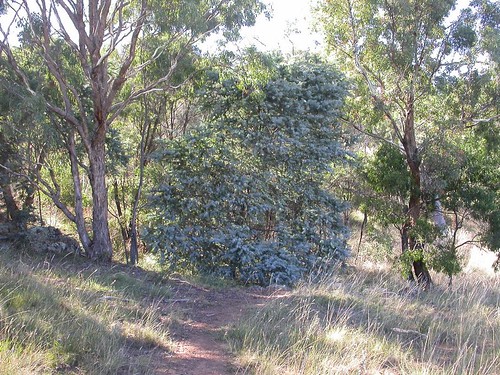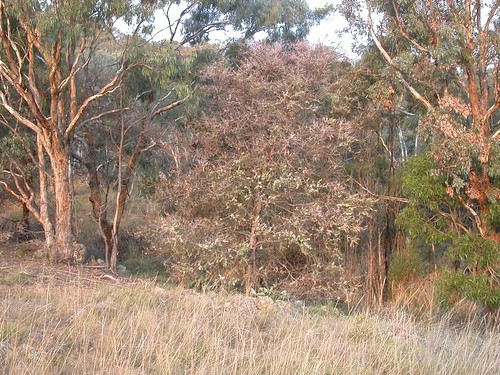 Serrated Tussock, Mount Ainslie Nature Reserve, ACTEW transmission line easement (Photograph W. Pix, 21.04.2010).
Serrated Tussock, Mount Ainslie Nature Reserve, ACTEW transmission line easement (Photograph W. Pix, 21.04.2010).
Serrated Tussock (Nassella trichotoma), a Weed of National Significance, is regarded as one of the worst weeds in Australia because of its invasiveness, potential for spread, and economic and environmental impacts. Participants of the Workshop held on 7 May 2011 will learn how to identify and control Serrated Tussock along with other highly invasive grass species.
When: Saturday, 7 May 2011 from 1.00pm to 3.00pm
Where: Meet at Hackett reservoir off Rivett/ French Streets, Mount Majura nature reserve, Hackett; car parking at Helms Place off Rivett Street; view this map for the meeting point and parking area
Bring: walking shoes, weather sensitive clothing, something to write, bags for samples and a camera.
Please RSVP to Jenny Conolly, Parkcare/Landcare Coordinator jenny.conolly@act.gov.au or ph 62057384 by Friday 6 May 2011.
Broaden your skills and learn how to identify and control the highly invasive grass weeds Chilean Needle Grass, Serrated Tussock and African Lovegrass.
This hands-on workshop will also include a discussion and demonstration of frilling – a method to treat large woody weeds in situ (standing) rather than cutting them down.
The workshop is conducted by Parks and Conservation Service and co-hosted by the Friends of Mount Majura ParkCare group.
More about Environemtal Grass Weeds
Click on this set of photographs to view the environmental grass weeds species of the Mount Majura Nature Reserve; whithin the set click on the idividual photo for an enlarged view and a description.
Descriptions and managment guidelines:
African Lovegrass, Eragrostis curvula
Chilean Needlegrass, Nassella neesiana
Serrated Tussock, Nassella trichotoma
More about Frilling Woody Weeds
See this essay on why and how to frill Woody Weeds such as Cootamundra Wattles.
The seven meters tall Cootamundra Wattle shown in the photographs below has been frilled on the 3 March 2011 by wounding the bark and injecting Glyphosate into the stem. The top shows the wattle before, the bottom shows the same wattle six weeks after treatment, when most leaves were dropped or discoloured. Cootamundra Wattle, Acacia baileyana is an Australian species that has been introduced to Canberra as a garden plant. The species is highly invasive and now wide-spread in the grassy woodlands and the forests of the ACT nature reserves.
Click on this set of photographs to view more images and descriptions of the frilled Cootamundra Wattle.






